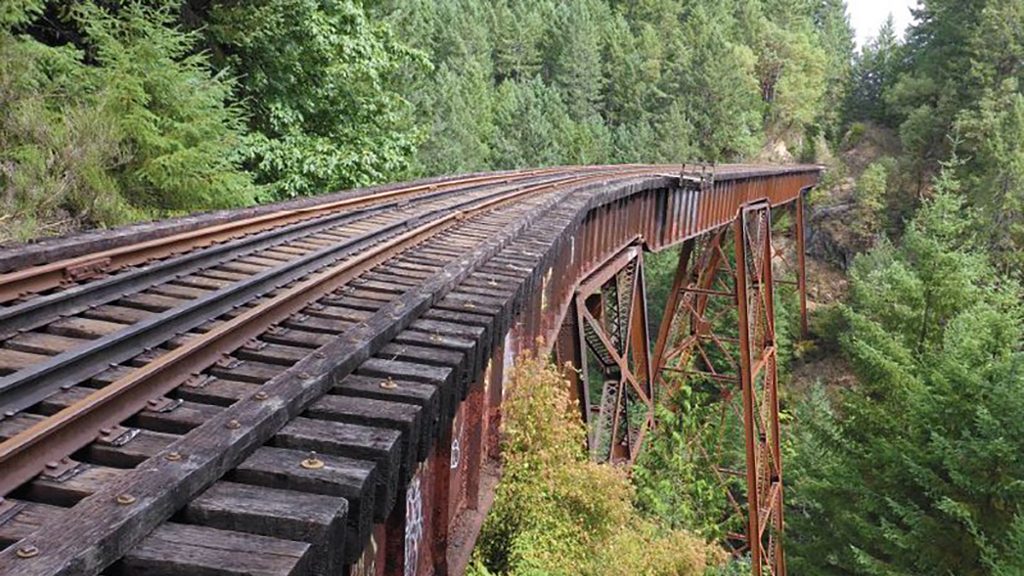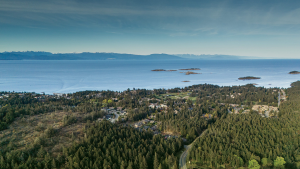The Government of British Columbia is examining options for a restored railway corridor on Vancouver Island.
A recent report by WSP Group Canada Ltd. for the B.C. Ministry of Transportation and Infrastructure, examined the plan for a corridor from Parksville to Port Alberni, and Wellcox Spur and Wellcox Yard near Nanaimo. The report included estimated costs to upgrade infrastructure to restore both freight and passenger service with multiple estimates for the various segments based on different use levels.
While the report lists various levels of infrastructure investment, it does not recommend specific courses of action.
“All this assessment does is provide an expert overview of the costs and infrastructure needed to return passenger service to the corridor. It doesn’t make any recommendations. This information is imperative to any future discussions around the viability of rail,” the B.C. Ministry of Transportation and Infrastructure stated in a response to the Journal of Commerce.
Island Corridor Foundation CEO Larry Stevenson said his organization told the government the railway corridor is an important piece of infrastructure, which is shovel-ready and “in light of COVID-19 needs to happen and can happen very quickly.”
“We already have an existing corridor, we have British Columbian labour and design, we can source aggregate from right here on the island and build all the ties here,” Stevenson said.
The railway was assessed as overall in “poor to fair” condition due to issues including uncontrolled vegetation within and adjacent to the rail corridor, a number of decayed ties exceeding the limits set by Transport Canada regulations and the presence of single shoulder plates and angle joint bars, which, as older technology, negatively impacts track performance.
Recommended improvements are based on a phased approach where initially minimum freight and passenger service would be restored at a cost of approximately $326 million.
An intermediate phase would see higher freight loading for increased freight and passenger volumes and speeds, at a cost of approximately $552 million and an ultimate phase would support higher freight and passenger volumes and would suit restoration of commuter service.
The ultimate phase would combine the costs of the other phases, resulting in an estimated cost of approximately $729 million.
“The costs estimated in the assessment could vary due to the dozens of risks identified (in the report). These high-level estimates could be affected by construction, labour and material costs,” the ministry stated.
Stevenson said while the highest cost option would be “kind of like a Cadillac,” current commuter and freight demand doesn’t warrant that approach.
“The middle section is where the focus should go, and even that should be a hybrid,” he said.
Stevenson also pointed out while his organization supports the project, they were not involved in the recent assessment.
“It was an independent review and that’s the right way to do it,” he said.
The original Vancouver Island Railway was built in 1886 between Esquimalt and Nanaimo by Sir Robert Dunsmuir, the premier of B.C. and owner of the E&N Railway, states the report. The railway expanded to downtown Victoria in 1888 and was sold to Canadian Pacific Railway in 1905. Via Rail later took over operation of passenger trains in 1978 and ceased passenger service in 2011 over concerns with track and bridge safety conditions.
The Ministry of Transportation and Infrastructure is working on an overall transport strategy for the southern portion of Vancouver Island and the rail assessment plays a part in that strategy.
“We are currently finalizing the South Island Transportation Strategy. The strategy is looking at all modes of transportation across the Southern Vancouver Island, including considering the merits of rail and we expect to release the strategy by the end of June,” the ministry stated.
Stevenson said the project is a “good news story for the province, but they need to make that decision.
“It’s bold, but it would be a great decision. It’s not a question of if we do it, but why haven’t we?”











We need to think of rail as an important piece of the transportation puzzle. It needs to be looked at from a social, environmental, and economic point of view. It provides social benefits to the community (alternatives to driving for those who don’t drive or those who want a break from driving). It provides environmental benefits (takes cars off the roads, reduces road wear, reduces GHGs, promotes dense development at stations) and economic benefits include creating jobs both directly and indirectly, provides freight options other than trucks.
1 cent a litre tax on all petroleum products sold here on the island will not kill anyone and could finance the rebuilding costs of the E&N.